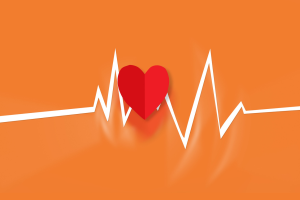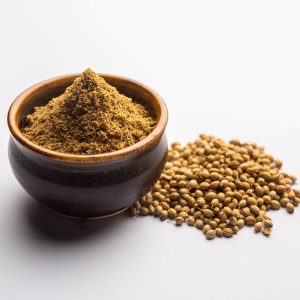Chief Benefits of Massage on Body’s Health

Massage therapy is an approach used for treatments which are highly in demand and popularity. Once it was once regarded as an alternative or fringe approach, but nowadays it is regarded as a mainstream treatment option.
Massage therapy involves therapies using hands to increase circulation, reduce stress, relieve anxiety, relieve tension, improve sleep, and promote relaxation throughout the whole body.
History of massage
Massage has a rich and varied history that dates back thousands of years. Different cultures have developed their own unique massage practices, each with their own specific techniques and purposes. Ancient Chinese, Ayurvedic, Greek, Roman, Native American, and Hawaiian cultures all had their own massage traditions.
In the Renaissance, there was an increased interest in anatomy and physiology, which led to the development of Swedish massage by Per Henrik Ling in the 19th century.
Swedish massage spread throughout the Western world in the early 20th century, and professional massage organizations and licensure laws were established.
Modern massage therapy has continued to evolve over time, with advancements in massage techniques, equipment, and integration with other complementary and alternative therapies.
Today, massage is a popular mainstream wellness practice that is widely recognized for its many health benefits.
How different types of massage work
- Swedish massage – focus on relaxation and circulation
- Deep tissue massage – focus on releasing muscle tension and pain
- Sports massage – focus on improving athletic performance and recovery
- Reflexology – focus on stimulating specific points on the feet or hands
- Shiatsu massage – focus on balancing energy flow
- Thai massage – focus on stretching and deep pressure
- Hot stone massage – focus on relaxation and warming the muscles
- Aromatherapy massage – focus on using essential oils for relaxation and healing
Benefits of Massage on body
It Is Relaxing –
Whenever you get under immense stress or pressure situation, your body produces unhealthy stress hormone viz. cortisol, which adds to the weight gain, headaches, sleeplessness, and digestive problems.
Massage therapy is well proven to reduce the levels of cortisol in the body.
It Reduces Stress –
The most important part of the massage health benefits, It might be wrong to say that massage only reduces stress, but regular massage sessions for a prolonged span of time also results in boosted energy levels, reduced levels of pain, and also stimulate individuals on emotional and physical levels.
It Can Help Lower Blood Pressure –
As researched by scientists, regular massage therapies do decrease blood pressure levels. Consistent and regular massage sessions do help in the reduction of sources for anxiety, depression, hostility, and tension.
Lower blood pressure levels mean that the risk of getting heart attacks, strokes, kidney failures, as well as many other health problems also decreases indirectly.
It Promotes Muscle Relaxation –
Massage therapy targets the source of the body pain by eliminating or removing tensed muscles, increases flexibility, and provides relaxation to the body as a whole.
Massage is also beneficial for the injured muscles or damaged tissues as it promotes proper circulation as well as oxygen. Massage also releases endorphins which are called the pain-killing hormone. These hormones help the body in getting stronger physically and emotionally.
It Can Help Improve Circulation –
The long-term merits of a massage therapy were underestimated by most of the people, but now it is scientifically proven that long-term massage therapies are very beneficial for the body. Improved circulation is a positive consequence of getting regular massage therapies on a consistent basis.
Proper circulation or improved circulation helps to bring damaged, tense and stiff muscles the rich blood supply which they need for healing.
The squeezing, pulling, and twisting action of the massage aids to eliminate lactic acid from the muscle tissues, which as a result improves circulation of the lymph fluid which is responsible for carrying the metabolic waste products away from internal organs as well as muscles.
In turn, this results improved overall body functioning.
Recommended Reading :
- Try Percussion Massager for Fast Pain Relief
- Ways to Manage Temporomandibular Joint Disorders
- Ways To Awaken Your Body For Healing
- Unique Whole Body Workouts
- Massage Spa Treats: A Great Gift Idea
It Can Help in Improving Postures –
Many people are suffering from back, muscle and neck pain. The primary cause of these sufferings is a consequence of poor posture. The incorrect posture can be of bad sitting or standing habits. Also the problem of overweight, poor postures, as well as repetitive movements, also adds to the strain on the back and many other key problem areas.
Massage therapy has the potential to get the body back into its original or correct alignment. In fact, improved posture is regarded amongst the most beneficial and relaxing aspects of this technique.
It Can Help to Boost the Body’s Immune System –
When stress gets to combine with sleep disturbances as well as poor nutrition, the impact can be directly noticed at the body’s immune system.
The ability of the body to fight against infections, bacteria’s and pathogens increases with regular massage therapies.
Conclusion
The benefits of massage on the body’s health are numerous and well-documented. Massage therapy has been shown to have both physiological and psychological effects, including increased blood and lymphatic circulation, improved muscle flexibility and range of motion, reduced muscle tension and spasms, improved immune system function, decreased inflammation, and lowered blood pressure.
Additionally, massage can reduce stress and anxiety, improve mood and relaxation, reduce symptoms of depression, improve sleep quality, and increase feelings of well-being and reduced fatigue.
Whether you are an athlete looking to speed up recovery time, someone with a chronic condition seeking pain relief, or simply someone looking to reduce stress and promote relaxation, massage therapy can offer a variety of benefits to support your overall health and well-being.






